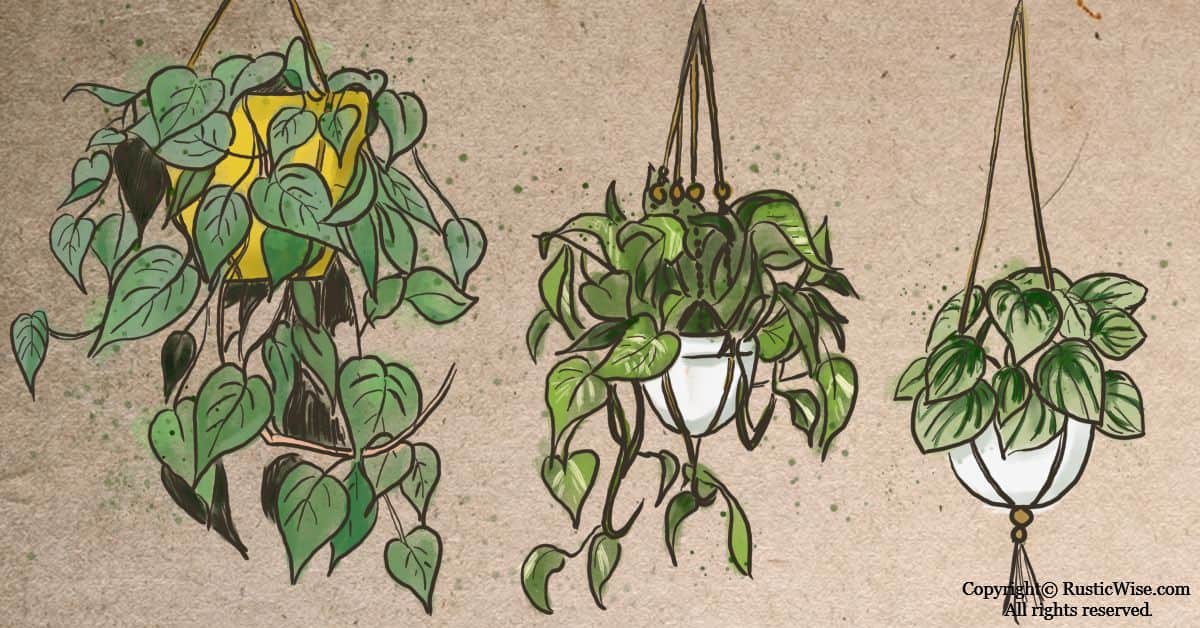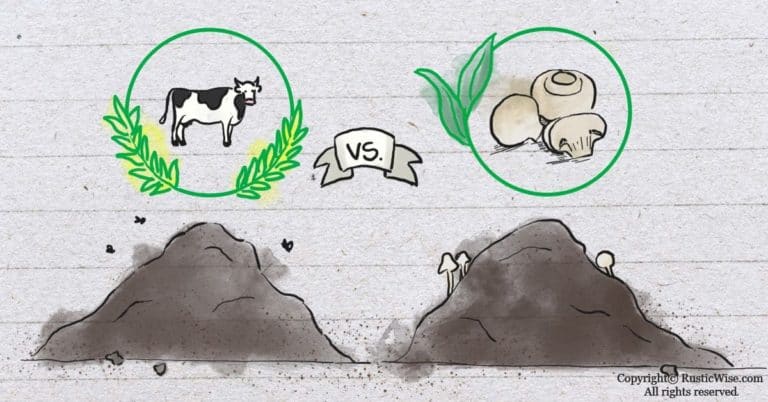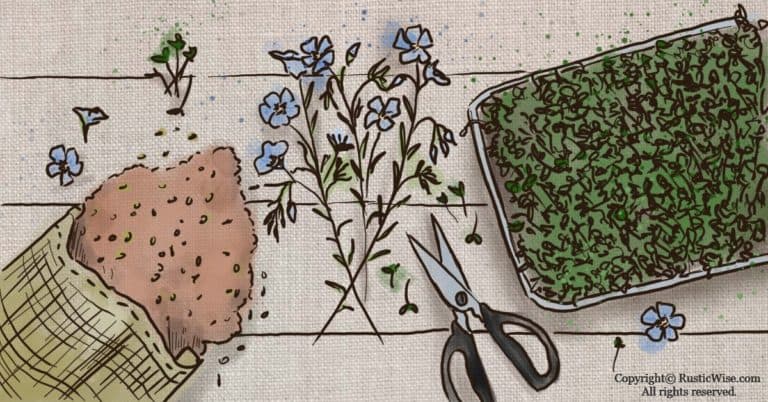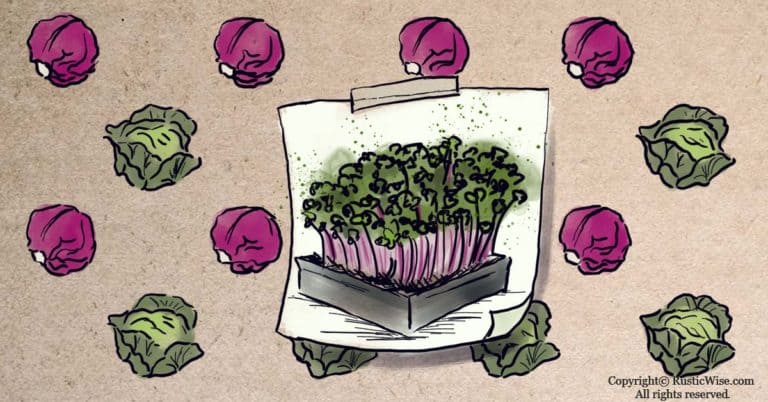10 Best Indoor Hanging Plants for Low Light Environments
There’s no better way to spruce up your indoor space than with a few houseplants. What if you’re low on space, and don’t have the best natural light? Hanging plants to the rescue!
An indoor plant that doesn’t need direct sunlight is a gift to all those who don’t have ample natural lighting. We’ve rounded up a list of the 10 best indoor hanging plants for low light environments including pothos, spider plant, philodendron, English ivy, and more!
Whether you simply want to brighten up a dark corner, or turn your home into an urban jungle, there’s an excellent hanging plant out there for you. Some of the best indoor hanging plants will even tolerate or thrive in a northern-facing window.
What is considered low light for plants?
When you’re researching the best indoor hanging plants for low light, it’s important to remember that low light doesn’t mean zero light. While some plants thrive or tolerate low light levels, all plants need some light.
(So if you’re looking for “hanging plant no light” it’s not entirely accurate.)
If you remember what you learned about photosynthesis back in your school days, you might recall that light is needed to kickstart photosynthesis. This amazing process converts light, oxygen, and water into energy (carbohydrates) for the plant to grow, bloom, and make seeds. Without enough light, plants slowly wither away and die.
When gardeners refer to low light, they typically mean indirect light. A good way to remember what low, indirect light is, is any light that allows you to comfortably read a newspaper or book.
If you want a more technical definition of low light for plant, the University of Minnesota defines it as a lightbulb of 10–15 watts.¹
If you don’t have enough natural sunlight for low light hanging plants, you might need an artificial grow light.
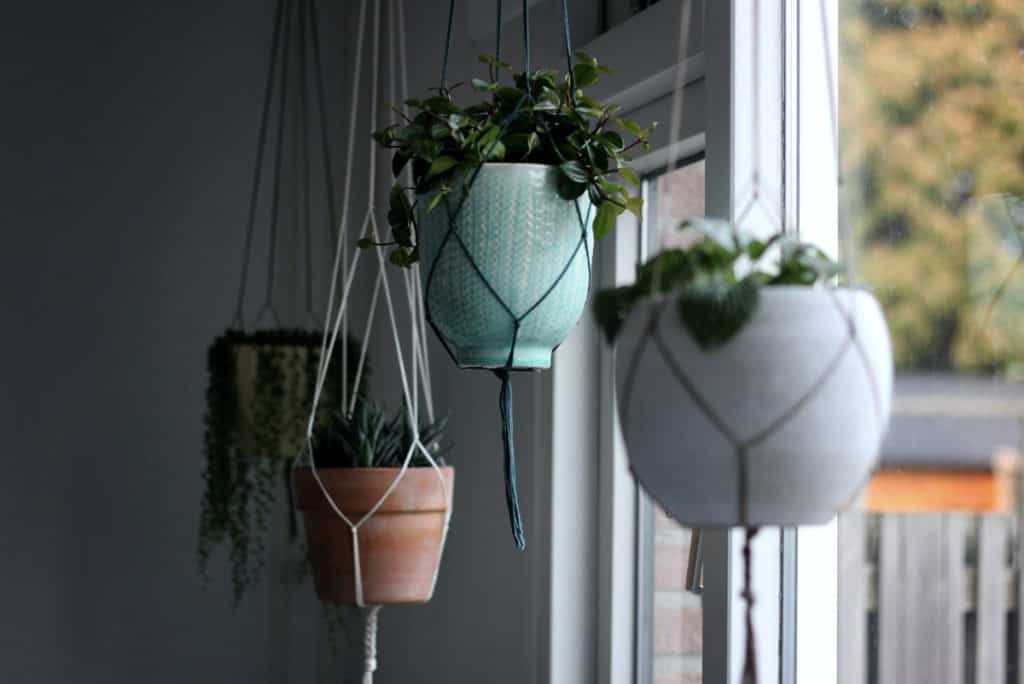
Tips on caring for low light plants
Low light plants have different needs than plants that thrive under bright light conditions. For one thing, you don’t need to water low light plants as much. It’s often best to allow the soil to dry before the next watering.
Now and then, it’s a good idea to send your low light indoor plant to a brighter spot for a week or two in another corner of your house. Just be sure to avoid direct sun as some low light plants scorch under the heat.
Tip: Many people recommend the prayer plant (Maranta leuconeura) as a plant for indirect sunlight. While the velvety green leaves with pinkish-red veins are a sight to behold, in my experience with a prayer plant, it doesn’t seem to do well in lower light areas. This tropical plant requires a bit of TLC to create humid conditions like a greenhouse.
The 10 best indoor hanging plants for low light
Trailing houseplants for low light are a great way to brighten up a dark corner of a room by inviting nature indoors. Best of all, they don’t take any counter or floor space! So grab a hanging planter, a hook, and take a look through this section to find the best indoor hanging plant for your cozy nook.
Here’s a list of 10 best indoor hanging plants for low light (in no particular order).
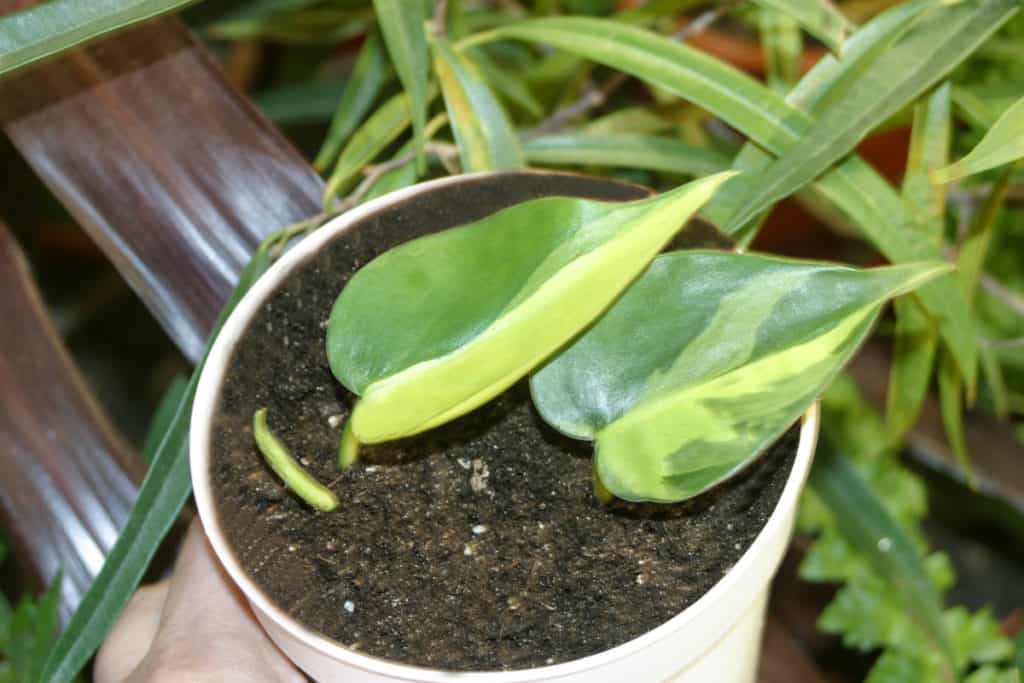
Credit: Yay Images
1. Heartleaf Philodendron (Philodendron hederaceum)
The Heartleaf Philodendron is a good variety for low light. It’s a popular houseplant because it’s low-maintenance and needs little watering. Plus its heart-shaped, shiny green leaves spruce up any dark corner. A bonus is that philodendrons have air-purifying qualities. This vining plant is great for trellises or stairway banisters. It grows up to 8 feet.
Care: Low or indirect light. Water once a week (or every other week), or when the top half of soil feels dry. Keep the vines lush by periodically trimming them.
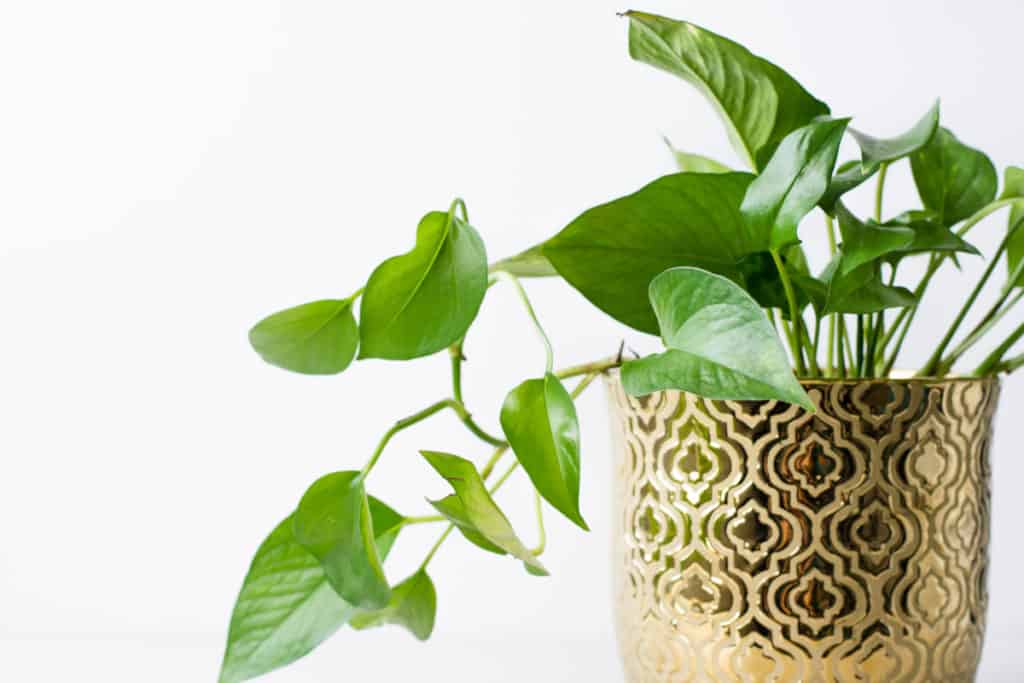
Credit: Kelsey Brown / Unsplash
2. Pothos (Epipremnum aureum)
Similar to philodendron, the pothos plant is also a great vine to keep in a hanging basket. Pothos that are placed on tabletops often get entangled. Hanging them in baskets helps keep them tangle-free.
There are a variety of cultivars in various shades of green, yellow, and a “silver” variety. On average, pothos grow to 6-10 feet. While there are many different types of pothos, an especially good variety for low-light is the Jade pothos. The jade variety has smooth shiny green leaves. Pothos also have great air-cleansing properties.
Golden pothos (also called Devil’s Ivy, or Devil’s vine) has variegated leaves, but in environments with insufficient lighting, it may revert to green.
Care: Tolerates low or indirect light, but prefers bright indirect sunlight. Allow soil to dry completely between waterings. Note that pothos are toxic plants for people and pets.
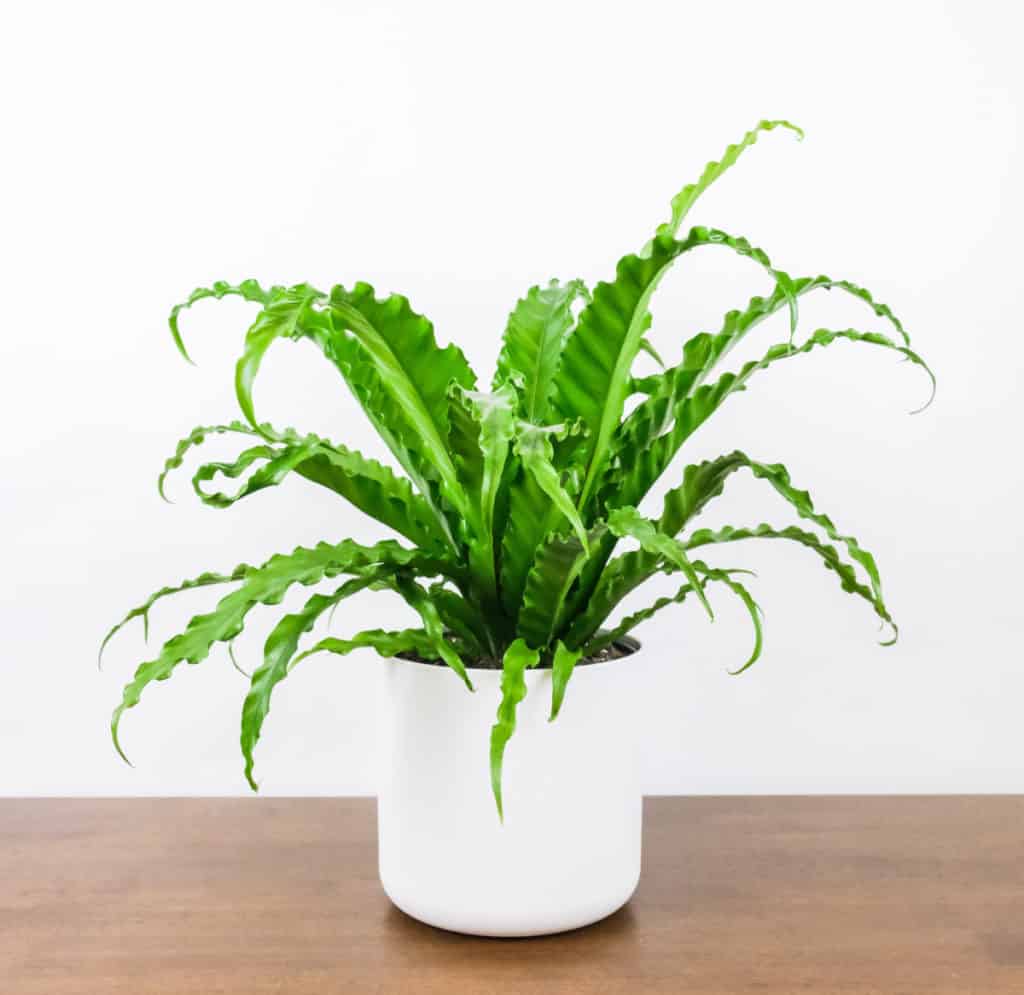
Credit: Severin Candrian / Unsplash
3. Bird’s nest fern (Asplenium nidus)
In their natural rainforest habitat, bird’s nest ferns attach themselves to other plants to grow. At home, you can try growing it atop wood or stone for a striking look. The amount of light these ferns get determines the shape of the leaves. More sun results in crinkled leaves. Less sun produces flatter leaves.
This low light indoor plant is a good choice to keep in humid areas, such as the bathroom.
Care: Loves humidity and moisture. It’s best to avoid direct sun as this turns the leaves yellow.
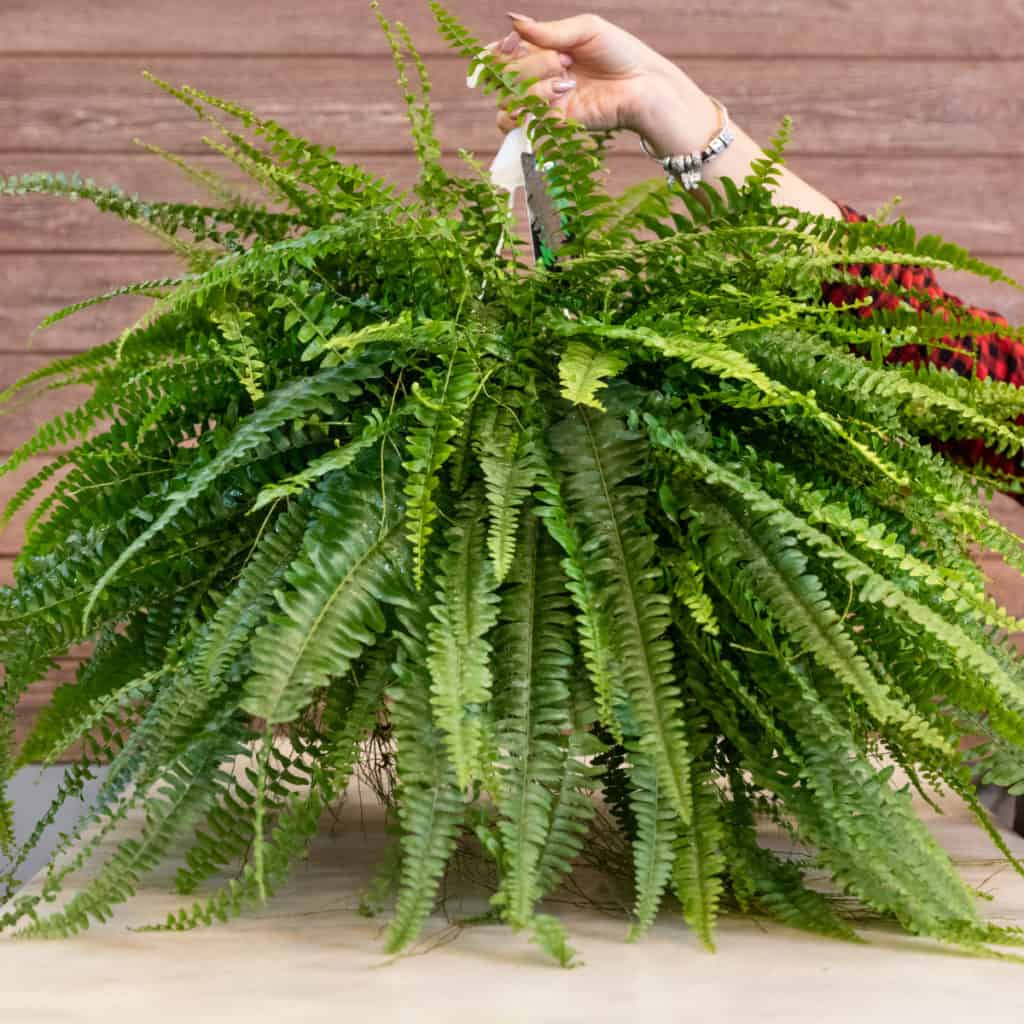
Credit: Yay Images
4. Boston (or Sword) fern (Nephrolepis exaltata)
These lovely ferns add a splash of bright green to your decor. The curved, graceful fronds make it ideal for an indoor hanging plant. Bonus, the Boston fern works to clean your indoor air.
This humidity-loving fern does well when you keep them cozy away from drafts or heat registers. It grows up to 3 feet.
Care: Low or indirect light, give it plenty of room for air-circulation. Keep well-misted during the winter months. Pet-friendly.
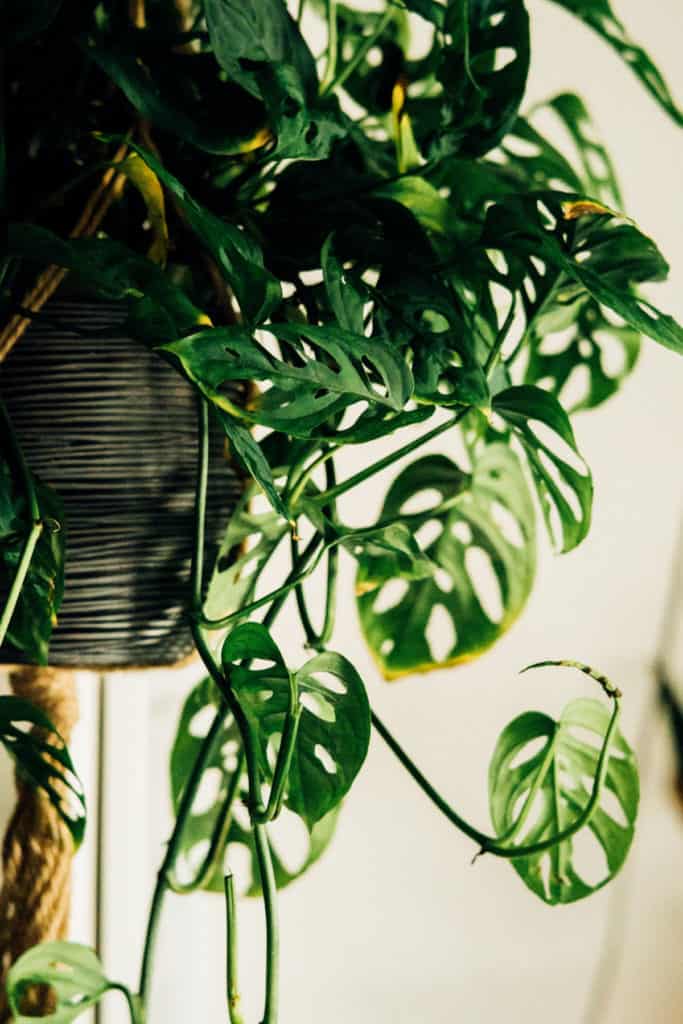
Credit: Mike Marquez / Unsplash
5. Monstera (Monstera deliciosa)
With its trademark cut-leaves, the monstera is also known as the Swiss Cheese plant. It’s one of the most popular tropical houseplants. While it initially isn’t a plant you would think of planting in a hanging pot, it tends to stretch and twist out over time. If it becomes too unruly, simply prune it back.
So if your monstera starts looking leggy, or if the leaves don’t “split” it’s a sign it needs more sun. Windows facing east, west, or south are okay.
Care: While monsteras tolerate low indirect light, they prefer medium to bright indirect light. It likes humidity. If you keep the soil slightly moist, you should have a happy plant.
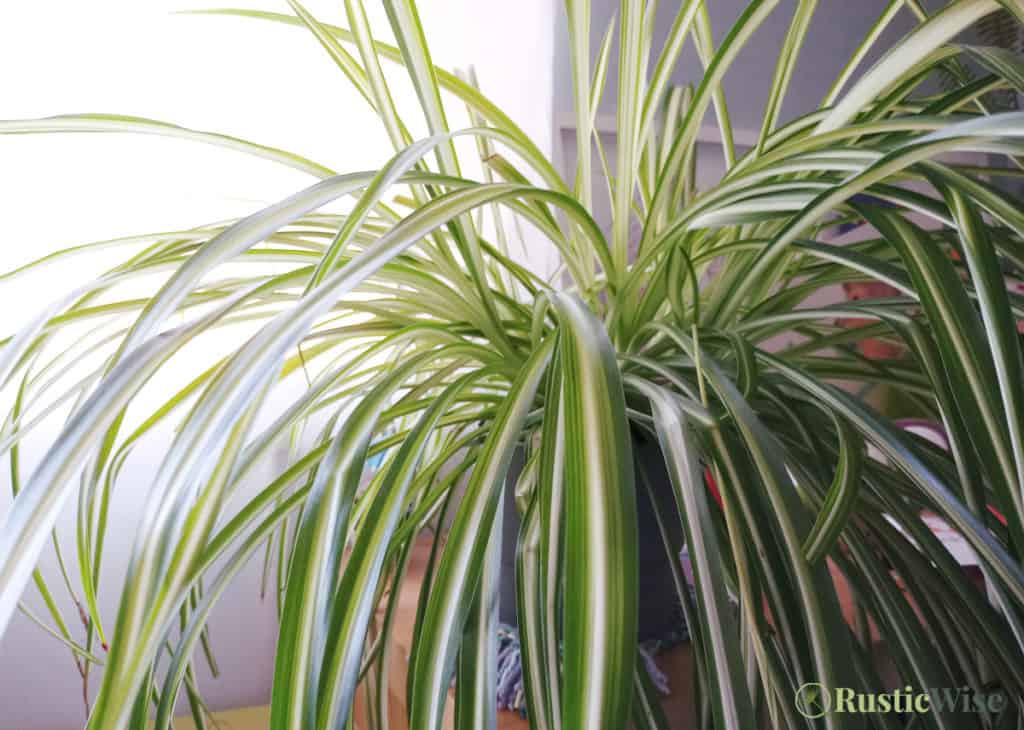
Credit: RusticWise.com
6. Spider plant (Chlorophytum comosum)
Also known as the airplane plant, this is one of the most resilient houseplants. It survives even in low light conditions. I know because I’ve kept a thriving spider plant in a north-facing window for years.
While there are many varieties, the most common one is the variegated variety with a light yellow or white stripe down the middle of each leaf. Spider plants produce many spider babies (aka “pups” or plantlets) that are perfect for propagation.
The graceful and thin leaves grow quickly, making it a great hanging houseplant. Spider plants are great for purifying indoor air according to a NASA study.² They were found to be especially effective in removing formaldehyde.
Care: Tolerates low light, but prefers bright to medium indirect light. Prone to root rot so avoid overwatering. Mist periodically. Keep away from cold windows.
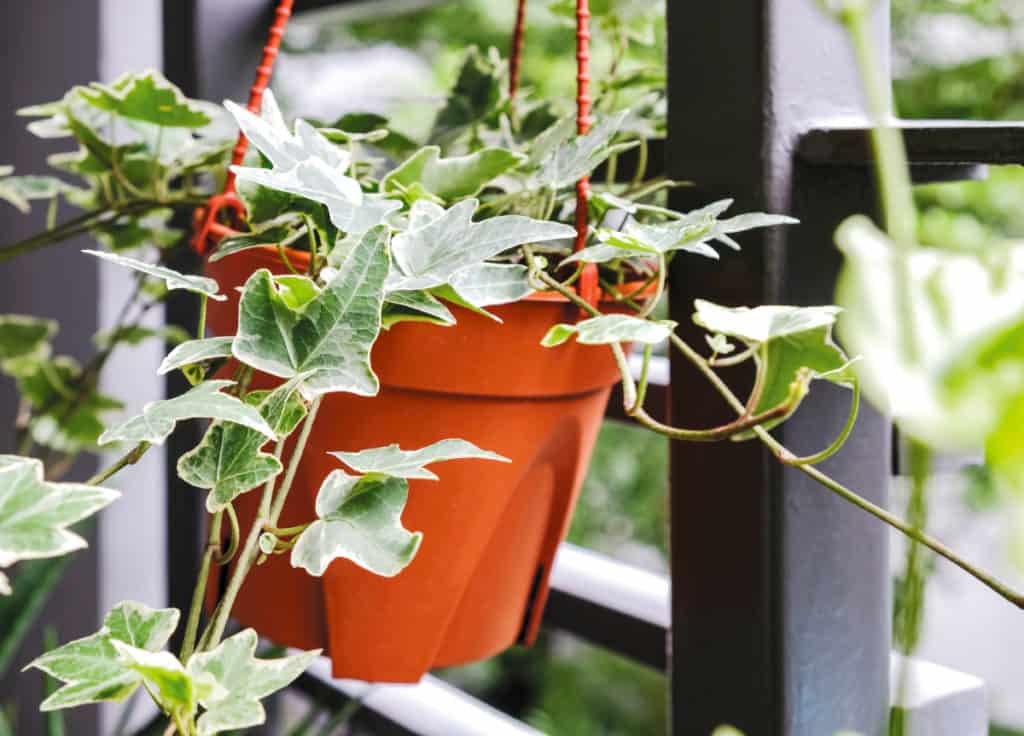
Credit: Yay Images
7. English ivy (Hedera helix)
Even if you have a window facing north, this lovely trailing plant thrives. Available in a number of different colors, and shapes, you can train this plant to grow around trellises or other structures too.
This ivy plant looks awesome with a few long vines spilling over the edge of hanging baskets. English ivy vines can grow fairly long. You might need to hang your planter higher up!
Care: Place in low or indirect low light. Keep soil moist, but not too soggy. Does fine in cooler temperatures. Mist well to ward off pests.
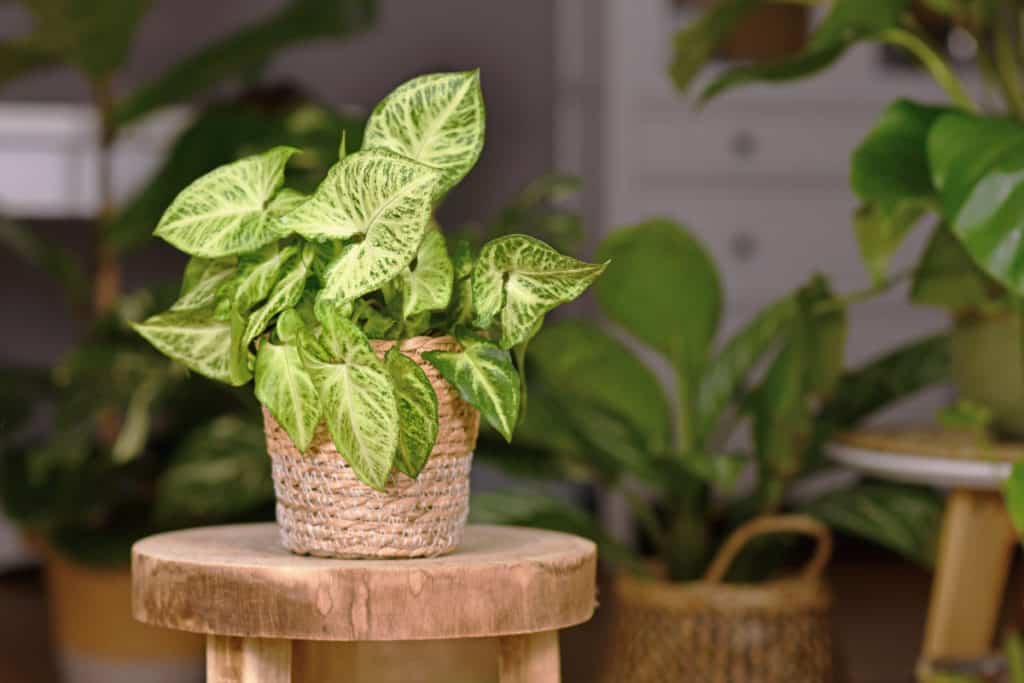
Credit: Deposit Photos
8. Arrowhead plant (Syngonium podophyllum)
Also referred to as an arrowhead vine, or American evergreen, this is a low-maintenance houseplant to add to your collections. While they start off bushy, these vines stretch and twist over time making them perfect plants for hanging baskets.
Colors range from golden-bronze, to green. This humidity-loving plant may be perfect for a bathroom or kitchen. It grows up to 3 feet.
Care: Low to medium indirect light. This tropical plant likes moisture and humidity. Keep the soil moist, and the plant well-misted.
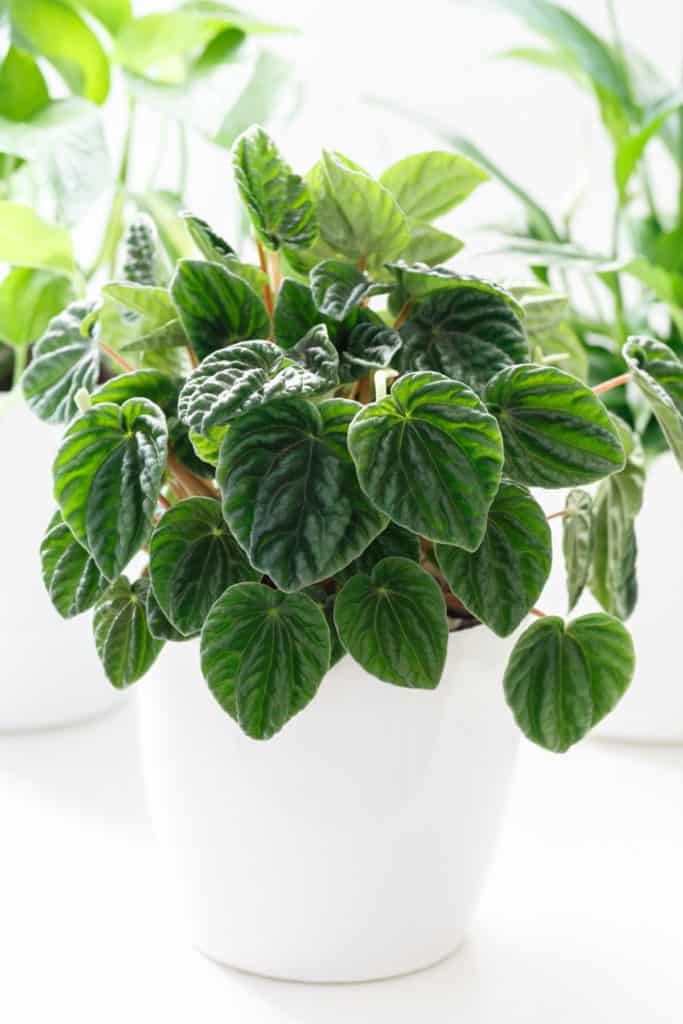
Credit: Deposit Photos
9. Peperomia (Peperomia caperata)
This striking plant comes in plenty of varieties that differ in leaf shape, color, and variegation. This is a disease and pest-resistant plant that’s great for newbie or neglectful plant parents.
The emerald ripple peperomia (Peperomia caperata) features striking, heart-shaped foliage and deeply corrugated leaves. When it blossoms, it produces white flowers. Place this beauty in a north or east-facing window where it can avoid direct light.³
Care: Indirect, bright light. Allow topsoil to dry between waterings. Adjust your watering schedule by season (less watering in cooler months). Water plants from the bottom to avoid getting leaves wet.
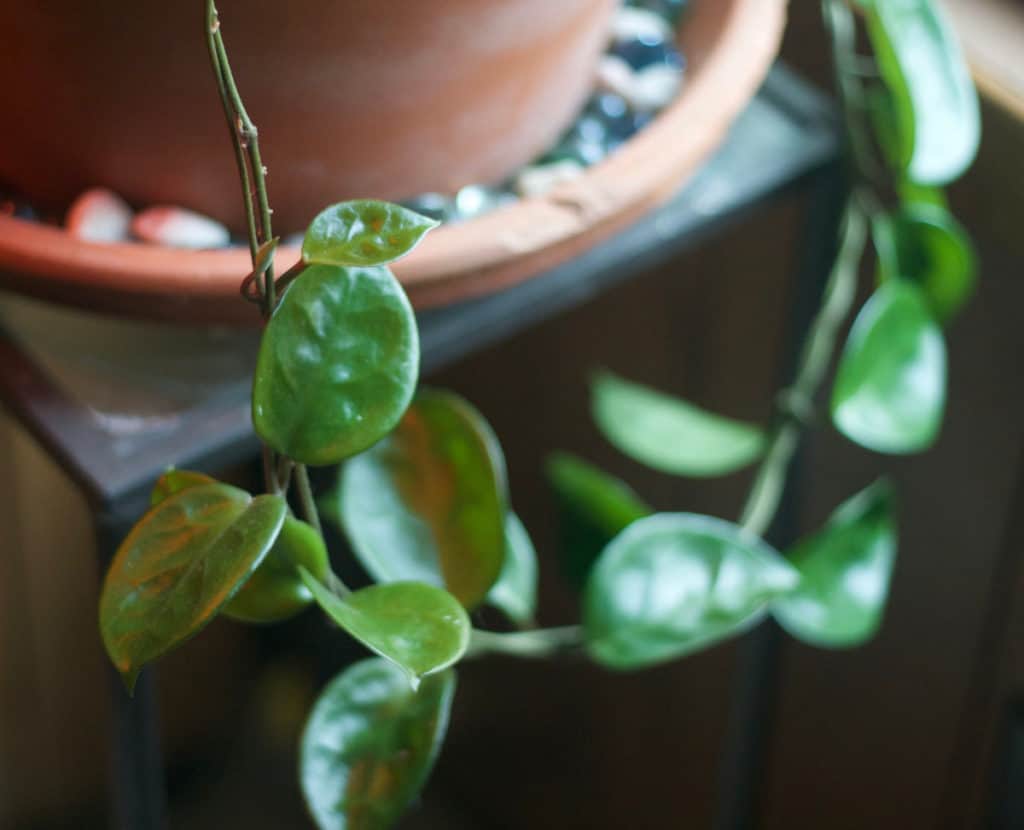
Credit: Saiberiac / Flickr
10. Wax plant (Hoya)
Also known as Hoya, the wax plant comes in either flat-leaved or crinkled varieties. If you’re lucky, your wax plant may bloom with small white flowers. Like other vines, you can train your wax plant to twist around trellises or other structures. Vines may reach up to 4 feet. Wax plants are easy to propagate.
I have a wax plant (H. carnosa) that’s facing our north-east window which gets indirect sunlight for only a couple hours a day. It’s still doing well! Although with the low level of light it receives, it hasn’t bloomed much.
Care: Low to bright indirect light. It likes humidity. Keep soil moist in warmer months and water less in winter. Mist well to retain moisture. Keep away from direct sun as leaves tend to scorch.
What happens when plants don’t get enough light?
Our list of the best indoor plants for low light is a great starting point, but sometimes your plant needs more light than you realized. Here’s a few signs your plant needs more light:
- It becomes leggy which means its stems stretch towards the light and begin to look thin.
- A change in leaf color. Some may take on a paler appearance, from pale green to white. This is due to the lack of chlorophyll from low light levels.
- Plants that normally flower no longer produce blooms.
- Leaves become more spaced apart on each stem.
- Plants shed their leaves.
- Once variegated plants (with more than one color) turn solid green.
Related questions
Are there any plants that don’t need any light?
Not really. While some greenhouses or stores may advertise “no sun” plants, all plants still need some light, whether it’s natural or artificial.
Plants that lack sunlight often turn paler due to a lack of chlorophyll. Some plants have evolved to exist in extreme low light conditions (think underneath other plants, or under a thick rainforest canopy) with wider, thinner leaves to absorb any sunlight they can.
There’s a ghost plant (Monotropa uniflora) that’s purely white. However, it’s classified as a parasite as it survives off of other plants.
If a plant is green, it means it needs sunlight in order for it to produce its own food and grow.⁴
What type of pots are best for hanging plants?
That depends on the water needs of your plant.
Clay or terracotta pots are great for plants that don’t like overwatering. The natural, porous material allows for good air circulation.
Ceramic pots are good for your humidity-loving, tropical plants as they tend to hold water well.
Can a snake plant live in low light?
Snake plants (Dracaena trifasciata) are one of the hardiest houseplants. Not only do they require very little light, they also are drought-resistant. So if you neglect this plant, it will survive (and forgive you).
But, if you’re looking for low light draping plants, this won’t do: the snake plant has thick, upright leaves that grow tall. They don’t drape, and are better suited in a regular pot rather than a hanging planter.
What is the best plant for a low light bathroom?
There are a few good options for a humid bathroom with minimal lighting. Bird’s nest fern (Asplenium nidus) loves moisture and humidity. So does the arrowhead plant (Syngonium podophyllum).
It’s a good idea to periodically move any bathroom plants to areas with more lighting to keep them healthy.
What is a low maintenance hanging plant?
Spider plants, philodendrons, and arrowhead vines are all easy to care for hanging houseplants that are perfect for newbie plant parents, or anyone with varying light conditions.
👉 If you like this post, see our complete Indoor Growing Collection.
Would you like more timeless tips via email?
Fun tips to help you live an independent, self-sustaining lifestyle. Opt-out at any time.


References
- University of Minnesota Extension, Lighting for indoor plants and starting seeds, https://extension.umn.edu/planting-and-growing-guides/lighting-indoor-plants. Accessed December 2022.
- BC Wolverton, WL Douglas, K Bounds (July 1989). A study of interior landscape plants for indoor air pollution abatement (Report). NASA. NASA-TM-108061. Accessed December 2022.
- Plant Care Today, Peperomia Caperata Care: Growing Tips For Emerald Ripple Peperomias, https://plantcaretoday.com/peperomia-caperata.html. Accessed December 2022.
- Morgridge, Blue Sky Science: How do plants grow if there’s no sunlight? https://morgridge.org/blue-sky/how-do-plants-grow-if-theres-no-sunlight/. Accessed December 2022.

Author: Theresa Tesolin
Theresa is co-founder of RusticWise. She helps people unleash their inner DIY spirit by encouraging them to get dirty and make or grow something from scratch.

